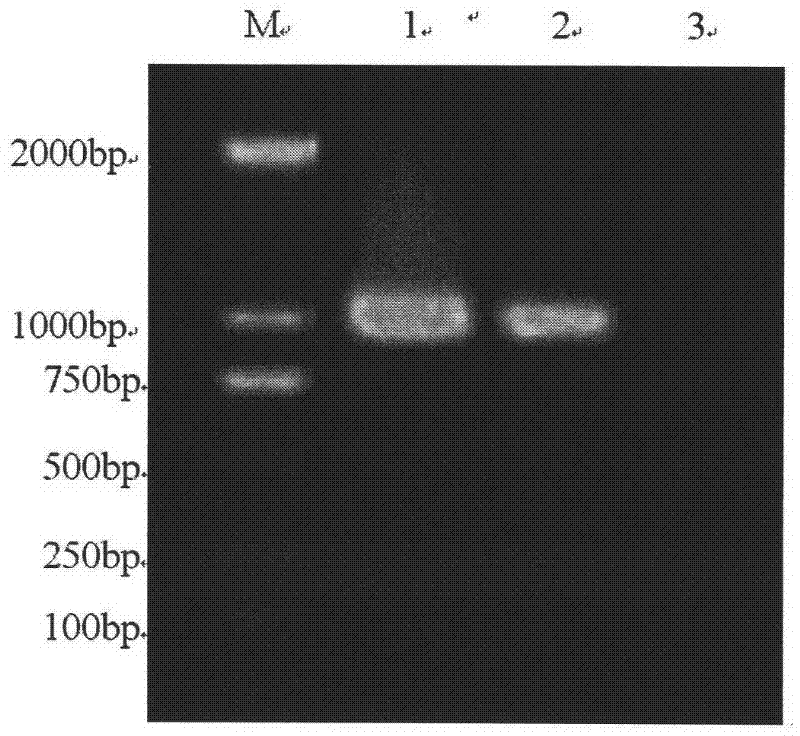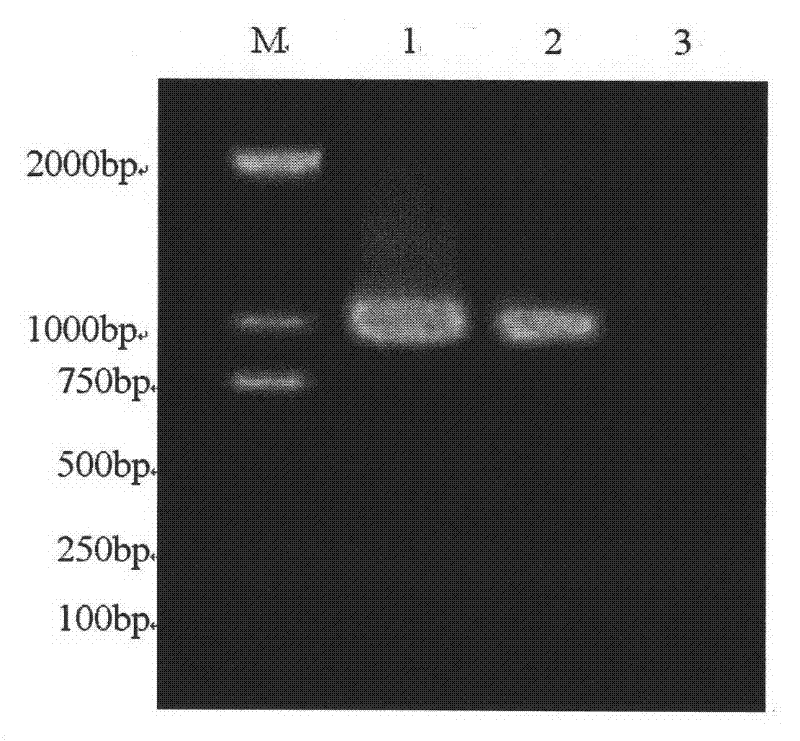Method for detecting canine influenza
A technology of canine influenza and SEQIDNO, which is applied in the field of detection of canine influenza, can solve the problems of many influencing factors, high price, and ELISA false positive, and achieve the effect of low quality requirements, improved specificity, and strong specificity
- Summary
- Abstract
- Description
- Claims
- Application Information
AI Technical Summary
Problems solved by technology
Method used
Image
Examples
Embodiment 1
[0027] Take a nasopharyngeal swab from a clinical case dog, put it into a centrifuge tube filled with 750 μL of normal saline, squeeze it several times, and use the supernatant as the virus solution for RNA extraction.
[0028] The specific operation steps are as follows:
[0029] Add 750 μL Trizol Ls Reagent to 250 μL virus solution, shake well at room temperature (15-30°C) for 5 minutes, then add 200 μL chloroform, shake well at room temperature (15-30°C) for 1-2 minutes, centrifuge at 12000 g, 4°C for 10 minutes , absorb about 500 μL of supernatant, add 500 μL of isopropanol, centrifuge at 12,000 g, 4°C for 10 min, discard the supernatant, add 1,000 μL of 70% DEPC ethanol, centrifuge at 7,500 g, 4°C for 5 min, and place in an ultra-clean bench After fully drying, add 20 μL DEPC water and store at -20°C.
[0030]Add 1 μL of random primers to 5 μL of the virus RNA extracted above, and then react in a 70° C. water bath for 5 minutes, and then ice-bath for 10 minutes. Then ad...
Embodiment 2
[0035] As in Example 1, but the samples were nasopharyngeal swabs from healthy dogs.
[0036] The result is as figure 2 As shown: the positive sample has the target band; the negative control has no target band; the test sample has no target band, and it is judged as negative.
PUM
 Login to View More
Login to View More Abstract
Description
Claims
Application Information
 Login to View More
Login to View More - R&D
- Intellectual Property
- Life Sciences
- Materials
- Tech Scout
- Unparalleled Data Quality
- Higher Quality Content
- 60% Fewer Hallucinations
Browse by: Latest US Patents, China's latest patents, Technical Efficacy Thesaurus, Application Domain, Technology Topic, Popular Technical Reports.
© 2025 PatSnap. All rights reserved.Legal|Privacy policy|Modern Slavery Act Transparency Statement|Sitemap|About US| Contact US: help@patsnap.com



